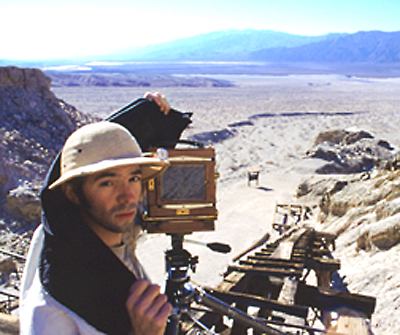 DEATH VALLEY HAER PHOTOGRAPHY
DEATH VALLEY HAER PHOTOGRAPHY
 DEATH VALLEY HAER PHOTOGRAPHY
DEATH VALLEY HAER PHOTOGRAPHY
In the DEVA recording project, three sites were systematically photographed. Overall views from six cardinal directions were taken first, to include elevations and oblique views. This puts features into their spatial relationship with each other and the environment. Next, detail views were taken, composed in such a way as to give a visual description of the technological process and equipment being used. For example, the photographs not only show the equipment in the stamp mill, but how the ore moved through the mill and between the pieces of equipment. Finally, detail views of important mechanical and structural components were made to complete the set of photographs. A total of one hundred and twenty five views were shot for all three sites. Photographing in the intense heat proved to be a challenge. Films were stored in a cooler and set inside the opening of an adit when possible to keep the film / latent image stable. Only a small number of film holders were kept on hand for immediate use, requiring many trips back and forth to the cooler. The 50 plus pounds of camera gear had to be carefully carried up and down the steep rocky slopes to gain the correct vantage point and perspective. A big concern was that with the camera exposed to the 120 degree temperature and direct sunlight, the glue holding the bellows and lens elements together would melt, so the camera was covered whenever possible. In fact, it was so hot that the metal tripod could only be handled with leather gloves. In the case of most outdoor shots, the light quality was of exceedingly high contrast, due to the lack of cloud and vegetation cover. The difference in luminosity of dark wooden structures and bright, reflective sand was handled through careful exposure and altered development. After coming in from the field, exposed films were downloaded as soon as possible, individually recorded, and new film was loaded for the next day.
Detail views of the Skidoo stamps, showing, LEFT, the aprons, bosses, shoes, and mortar blocks on the floor level of the batteries. Tappets, cams and stems, RIGHT, are located at the top of the batteries.
(HAER photograph by G. Archimede)